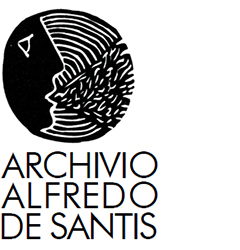It all started after his studies at the Academy of Fine Arts: the meetings at the Ferro di Cavallo bookshop (with Schifano, Burri, Perilli, Sinisgalli), the short stay in Milan (in the golden age of the "Quaderni Imago" of Provinciali , Tovaglia, Iliprandi and Lucarini) and, in 1964 with the return to Rome and the opening of his studio.
The list of works carried out is long, and goes from children's books (for Amz, Bompiani, Emme Edizioni) to the coordination of the image of cinematographic initiatives (the days of Silent Cinema, Teleconfronto), from the short themes for Rai to political graphic work for the press and propaganda of the Italian PCI Federation, the Manifesto, the setting of the last series of Rinascita and the first editorial project of Liberation. But beyond a first (necessarily summary) list, it seemed important for us to mention his subsequent move outside a dimension, the Roman one, which he believed had become much less stimulating than in the past. The choice to go and live with Carla Conversi in Monticchiello concurred with a very important phase of his activity in those last years. He works for the Teatro Povero, whose image he created in 1987. His relationship of reciprocal exchange between painting and graphic sign finds new strength and expressiveness in this new dimension.
The more recent years have seen him at the centre of an intense network of exchanges, comparisons, discussions (with his friend De Bartolomeis in particular), passionate interventions and full of the will to affect reality. The deepening of his research discourse (carried out in collaboration with his son Brando) saw him continue in the coordination of the image of an industry (Gabriele Centazzo's Val Cucine), bringing together the entire evolution of his recent production oriented in a formal sense. It is probably in the intuition of the 1980 series of oils “Painters' camps” the sense of the recovery of gesture, of matter, of the sense of colour; the dimension that best summarizes the meaning of his activity, his feeling of being a painter even against the limits of the horizons of many of the figures active in the field of Italian visual communication. It was a cycle that was closing, a return to the loves and passions of his youth. A personal path, strict and without easy concessions, but always extremely open to comparison, to the richness of the reality in which he acted. An indication, a way of working and living.

